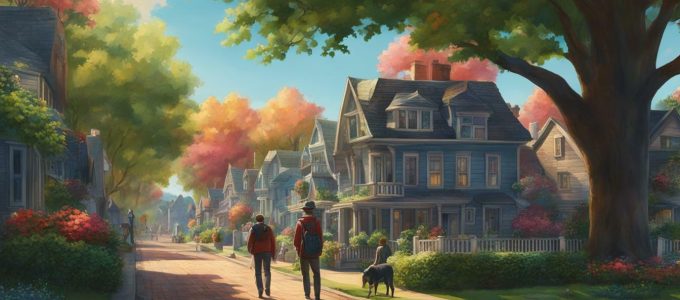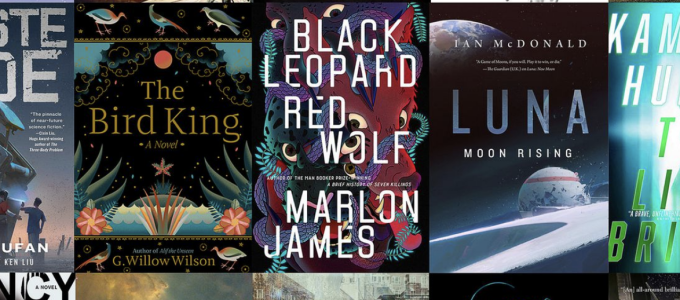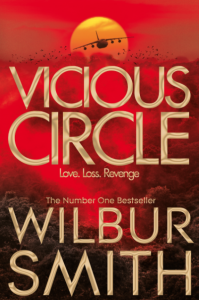Discover the 20 Most Adaptable Novels that have reshaped the literary and cinematic world. These novels have captivated audiences both on the page and on the screen, solidifying their status as must-reads for both book and movie lovers alike.
Key Takeaways:
- These novels have successfully transitioned from page to screen, becoming popular books for movie adaptations.
- They have been turned into bestselling novels turned into movies, with their stories and characters leaving a lasting impact.
- Famous novels adapted into films have proven their enduring appeal and cinematic potential.
- For those interested in screen adaptations, these novels are highly recommended.
- Explore the worlds of these adaptable novels and discover why they are considered some of the best choices for film adaptations.
Notable Adaptable Novels
In addition to the top 20 most adaptable novels, there are several other noteworthy books that hold immense potential for captivating film adaptations. These novels have gained recognition for their engaging storylines and diverse characters, making them prime candidates for future cinematic versions.
Emma, written by Jane Austen, is a beloved classic that combines romance, wit, and social commentary. With its charming protagonist and captivating plot, Emma has the perfect ingredients for a successful film adaptation that would resonate with audiences.
The Color Purple, written by Alice Walker, is a powerful and thought-provoking novel that explores themes of race, gender, and identity. Its compelling narrative and profound storytelling make it a prime contender for a captivating and impactful film adaptation.
Normal People, written by Sally Rooney, is a contemporary novel that follows the complex relationship between two young individuals as they navigate love, friendship, and personal growth. Its relatable characters and emotional depth would translate well onto the big screen, resonating with a wide audience.
Poldark, written by Winston Graham, is a historical saga set in 18th-century Cornwall. With its rich characters and sweeping storylines, Poldark offers a unique blend of romance, adventure, and intrigue. Its potential for a visually stunning and compelling film adaptation is undeniable.
- The Maze Runner, written by James Dashner, is a thrilling dystopian novel that captivated readers worldwide. Its fast-paced plot and suspenseful twists make it an ideal candidate for a thrilling film adaptation that would leave audiences on the edge of their seats.
- The Princess Diaries, written by Meg Cabot, is a delightful coming-of-age story that follows the life of a teenage girl who discovers she is a princess. With its humor, heart, and relatable protagonist, The Princess Diaries has the potential to become a beloved and iconic film series.
- One Flew Over the Cuckoo’s Nest, written by Ken Kesey, is a powerful and thought-provoking novel set in a mental institution. Its exploration of individualism, authority, and sanity would make for a compelling and thought-provoking film adaptation.
- To Kill a Mockingbird, written by Harper Lee, is a timeless classic that addresses themes of racial injustice and coming-of-age in the deep South of the United States. Its powerful message and memorable characters make it a prime candidate for a poignant and impactful film adaptation.
- Snowpiercer, written by Jacques Lob, Benjamin Legrand, and Jean-Marc Rochette, is a gripping science fiction graphic novel set in a post-apocalyptic world. Its unique premise and social commentary would make for a visually stunning and thought-provoking film adaptation.
- The Nanny Diaries, written by Emma McLaughlin and Nicola Kraus, is a humorous and satirical novel that offers a glimpse into the world of New York City’s elite. With its sharp wit and relatable protagonist, The Nanny Diaries has the potential to be a witty and entertaining film adaptation.
| Novel | Author |
|---|---|
| Emma | Jane Austen |
| The Color Purple | Alice Walker |
| Normal People | Sally Rooney |
| Poldark | Winston Graham |
| The Maze Runner | James Dashner |
| The Princess Diaries | Meg Cabot |
| One Flew Over the Cuckoo’s Nest | Ken Kesey |
| To Kill a Mockingbird | Harper Lee |
| Snowpiercer | Jacques Lob, Benjamin Legrand, and Jean-Marc Rochette |
| The Nanny Diaries | Emma McLaughlin and Nicola Kraus |
Exploring the Adaptation Process
As the literary and cinematic worlds continue to merge, it is essential to explore the qualities that make a novel highly adaptable for the silver screen. Certain novels possess a unique combination of storytelling elements that lend themselves well to film adaptations. From gripping plots to complex characters, these novels have the potential to captivate audiences on both the page and the screen.
One of the key qualities that make a novel highly adaptable is a compelling and engaging storyline. Novels that would make great films often have a narrative that is filled with tension, twists, and turns, keeping readers hooked from beginning to end. These stories provide a solid foundation for filmmakers to craft visually stunning and emotionally gripping movies.
Another important factor is having well-developed and relatable characters. The next big novel-to-movie adaptations are those that feature memorable protagonists and antagonists who undergo personal growth and transformation throughout the story. By bringing these characters to life on the screen, filmmakers can create powerful and compelling performances that resonate with audiences.
Additionally, novels that could be turned into movies often have a unique setting or world-building that adds depth and richness to the story. Whether it’s a dystopian future, a magical realm, or a historical period, these immersive settings provide filmmakers with the opportunity to create visually stunning and atmospheric films.
Some highly sought-after novels for film adaptations are those that have already garnered a passionate following and critical acclaim. These novels are often beloved by readers and have the potential to attract a wide audience when adapted into movies. By tapping into an existing fanbase, filmmakers can generate buzz and excitement surrounding the film adaptation.
In conclusion, exploring the qualities that make a novel highly adaptable for the silver screen reveals the potential for a seamless transition from page to screen. Novels with cinematic potential have compelling storylines, well-developed characters, unique settings, and an existing fanbase. By harnessing these qualities, filmmakers can bring these beloved novels to life and create memorable cinematic experiences for audiences.
| No. | Novel | Author |
|---|---|---|
| 1 | And Then There Were None | Agatha Christie |
| 2 | Alice’s Adventures in Wonderland | Lewis Carroll |
| 3 | The Three Musketeers | Alexandre Dumas |
| 4 | Pride and Prejudice | Jane Austen |
| 5 | Hamlet | William Shakespeare |
| 6 | Frankenstein | Mary Shelley |
| 7 | Sherlock Holmes | Sir Arthur Conan Doyle |
| 8 | A Christmas Carol | Charles Dickens |
| 9 | Les Miserables | Victor Hugo |
| 10 | Dracula | Bram Stoker |
Conclusion
In conclusion, the 20 most adaptable novels have left an indelible mark on both the literary and cinematic landscapes, showcasing the transformative power of storytelling. These novels, including classics like “And Then There Were None” by Agatha Christie and “Pride and Prejudice” by Jane Austen, have captivated readers and audiences for generations. Their ability to seamlessly transition from page to screen is a testament to their enduring appeal and timeless themes.
From the gothic horror of “Frankenstein” by Mary Shelley to the gripping detective stories of Sherlock Holmes by Sir Arthur Conan Doyle, these novels have not only entertained but also sparked discussions on morality, love, and the human condition. Their rich characters, intricate plotlines, and vivid settings have provided a solid foundation for filmmakers to bring these stories to life on the silver screen.
But it’s not just the classics that have proven adaptable. Other notable novels like “Emma,” “The Color Purple,” and “The Maze Runner” have also garnered attention for their cinematic potential. These novels, among others, possess the intriguing narratives and compelling characters that make them prime candidates for future film adaptations. As technology and storytelling techniques continue to evolve, these books hold the promise of captivating audiences in new and exciting ways.
Ultimately, the 20 most adaptable novels remind us of the powerful connection between literature and film. They demonstrate that a great story can transcend medium, leaving a lasting impact on those who experience it. Whether we read them in the comfort of our homes or watch their adaptations on the big screen, these novels continue to shape our understanding of the world and ourselves.
FAQ
Can you provide a list of the 20 most adaptable novels?
Certainly! Here are the 20 most adaptable novels:
1. And Then There Were None by Agatha Christie
2. Alice’s Adventures in Wonderland by Lewis Carroll
3. The Three Musketeers by Alexandre Dumas
4. Pride and Prejudice by Jane Austen
5. Hamlet by William Shakespeare
6. Frankenstein by Mary Shelley
7. Sherlock Holmes by Sir Arthur Conan Doyle
8. A Christmas Carol by Charles Dickens
9. Les Miserables by Victor Hugo
10. Dracula by Bram Stoker
11. Emma
12. The Color Purple
13. Normal People
14. Poldark
15. The Maze Runner
16. The Princess Diaries
17. One Flew Over the Cuckoo’s Nest
18. To Kill a Mockingbird
19. Snowpiercer
20. The Nanny Diaries
What makes a novel adaptable for screen adaptations?
Novels that possess compelling narratives, well-developed characters, and vivid settings are often considered ideal candidates for screen adaptations. The story should have a strong visual element and the potential for engaging cinematic experiences. Additionally, novels with existing popularity and a dedicated fan base also tend to be attractive to filmmakers.
Are there any notable adaptable novels that didn’t make the top 20 list?
Yes, there are several notable adaptable novels that didn’t make the top 20 list. Some of these include “Emma,” “The Color Purple,” “Normal People,” “Poldark,” “The Maze Runner,” “The Princess Diaries,” “One Flew Over the Cuckoo’s Nest,” “To Kill a Mockingbird,” “Snowpiercer,” and “The Nanny Diaries.”
Which novels are currently being considered for future film adaptations?
There are many novels currently being considered for future film adaptations. Some of the most anticipated novels include “Emma,” “The Color Purple,” “Normal People,” “Poldark,” “The Maze Runner,” “The Princess Diaries,” “One Flew Over the Cuckoo’s Nest,” “To Kill a Mockingbird,” “Snowpiercer,” and “The Nanny Diaries.” These novels have captured the attention of producers and directors for their potential to translate into captivating cinematic experiences.
















 You might be curious about the identity of the brain or brains behind Bitcoin which might remain anonymous for a very long time. For now, let’s stick to Satoshi Nakamoto the public name although the physical personnel remains virtual. The book of Satoshi entails the publications the Bitcoin creator managed to write for two years from November 1st, 2009 before disappearing, from the internet. The information available about the Bitcoin creator is in the publications with no personal information known up to date, and it might remain that way even forever.
You might be curious about the identity of the brain or brains behind Bitcoin which might remain anonymous for a very long time. For now, let’s stick to Satoshi Nakamoto the public name although the physical personnel remains virtual. The book of Satoshi entails the publications the Bitcoin creator managed to write for two years from November 1st, 2009 before disappearing, from the internet. The information available about the Bitcoin creator is in the publications with no personal information known up to date, and it might remain that way even forever.
 Vicious circle is an action thriller written by standards that are not commonly found in this day. It involves a man, Hector Cross, who is married to Hazel Bannock, the heir of oil business. Hector leaves his life that is full of risks and settles down with his beloved. After sometime dark forces come calling and they kill his wife Hazel who has just delivered a girl. The story revolves around the discovery of his old enemies and those for Hazel. Hector, determined to protect his little girl joins forces with his friends to hunt down the people who seek his and his daughter’s lives.
Vicious circle is an action thriller written by standards that are not commonly found in this day. It involves a man, Hector Cross, who is married to Hazel Bannock, the heir of oil business. Hector leaves his life that is full of risks and settles down with his beloved. After sometime dark forces come calling and they kill his wife Hazel who has just delivered a girl. The story revolves around the discovery of his old enemies and those for Hazel. Hector, determined to protect his little girl joins forces with his friends to hunt down the people who seek his and his daughter’s lives. The book has received accolades around the world with many readers indicating the never-ending thrill of this best seller book. With some stating that they were literally on the edge of their sits with hearts beating with anticipation.
The book has received accolades around the world with many readers indicating the never-ending thrill of this best seller book. With some stating that they were literally on the edge of their sits with hearts beating with anticipation.
 A drone is an aircraft of variable size and utility, mostly remote-controlled, even if some of them are autonomous. Purists make the difference between Unmanned Aircraft (UAVs) and commercially available remote-controlled helicopters (Quadricopters or multi-rotor) but these are details. Remember, a drone is a flying thing. If you are after the best seller in 2017, you should
A drone is an aircraft of variable size and utility, mostly remote-controlled, even if some of them are autonomous. Purists make the difference between Unmanned Aircraft (UAVs) and commercially available remote-controlled helicopters (Quadricopters or multi-rotor) but these are details. Remember, a drone is a flying thing. If you are after the best seller in 2017, you should  A lot of drone pilots might have started with this guide for “dummies.” This book is apparently for total newbies and is a good pick if you are just beginning and want to grasp some of the basic concepts. You will know a lot more about Ready To Fly drones and how to pick the best for your use. A few technical mistakes in this book but overall a good catch!
A lot of drone pilots might have started with this guide for “dummies.” This book is apparently for total newbies and is a good pick if you are just beginning and want to grasp some of the basic concepts. You will know a lot more about Ready To Fly drones and how to pick the best for your use. A few technical mistakes in this book but overall a good catch! If you’re interested in aerial photography or aerial video, you’ve probably already asked yourself the question of the basic safety rules to be respected during aerial filming with these funny drones.
If you’re interested in aerial photography or aerial video, you’ve probably already asked yourself the question of the basic safety rules to be respected during aerial filming with these funny drones.









